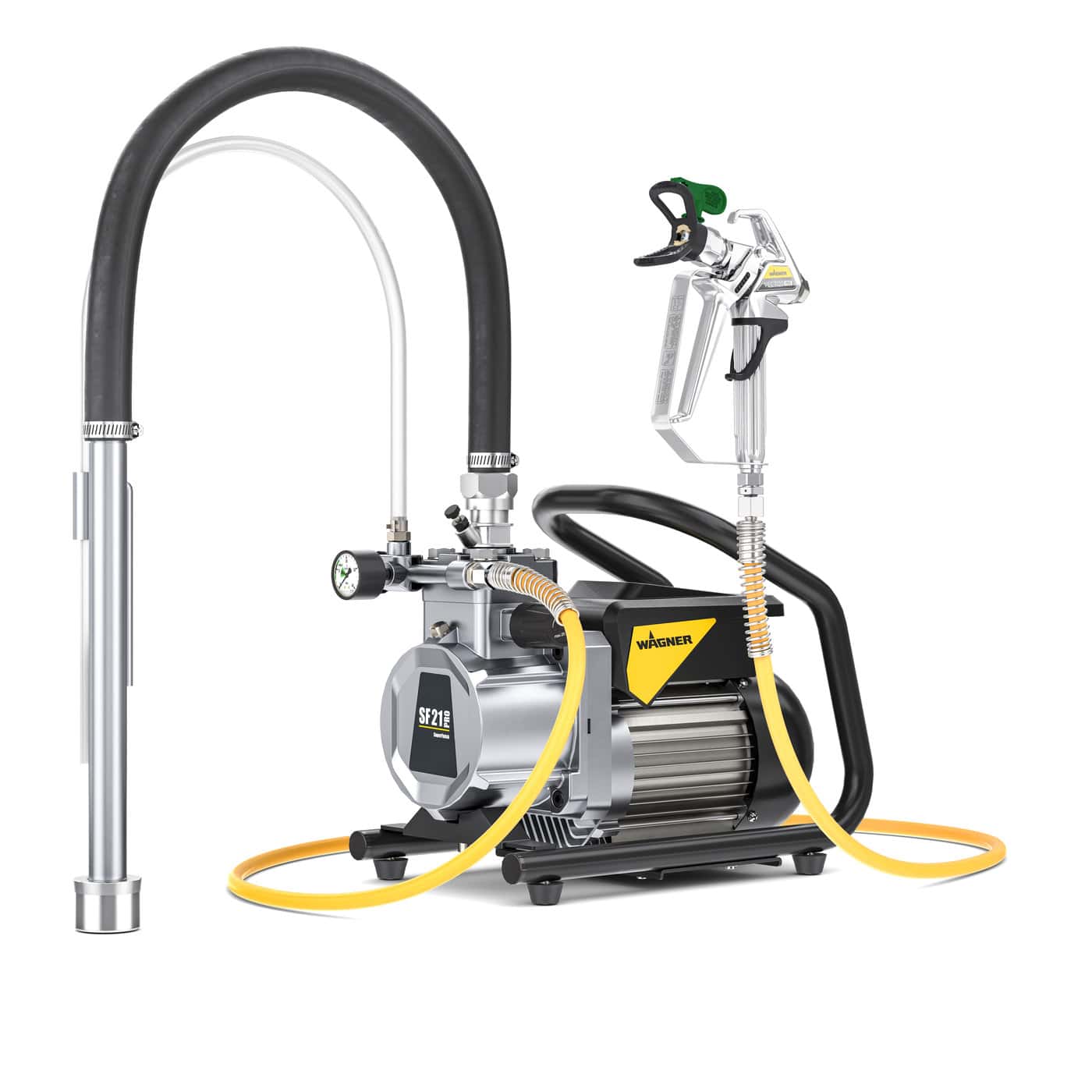Airless Spray Painting Systems: Should You Choose a Piston or Diaphragm Pump?
Unlike conventional pressure fed or HVLP spray systems, airless sprayers don’t rely on compressed air. Instead, they use electric or petrol motors to drive either a diaphragm or a piston pump, forcing paint at high pressure through the hose and out the spray tip.
But what exactly is the difference between diaphragm airless spray pump and piston airless spray pumps and which one is better for your project?
Piston Airless Spray Pumps
Piston pumps are by far the most commonly used pump type in airless spray painting systems—and for good reason. They’re powerful, efficient, and capable of handling a wide range of coatings, from thin stains to thick paints and primers.
In a piston pump system, a single piston drives the action. Here's how it works:
As the piston moves upward, it creates a vacuum, drawing paint or liquid coating into the pump chamber through the inlet valve.
On the downward stroke, the piston pushes that liquid out through the outlet valve, pressurising it and sending it through the hose and out your spray tip, atomising the paint into a fine, even mist.
Both piston and diaphragm pumps have inlet and outlet valves, but piston pumps are capable of producing much higher pressure than their counterparts.
Piston Pump Advantages
As we just mentioned, piston pumps produce higher pressure than diaphragms, which in turn makes them capable of spraying material over further distances.
The higher pressure also lends itself to applications of high-viscosity coatings and better paint atomisation, meaning there’s less risk of paint spitting.
They run only when they’re needed rather than running constantly.
Piston Pump Disadvantages
While piston pumps have the edge on diaphragms when it comes to pressure, they are prone to spray fluctuations when you’re using them at lower pressures
This is because a piston pump builds to max pressure; pulling the trigger results in a short ‘kickback’ or 'pressure spike' of paint at a slightly higher pressure than the desired spraying pressure.
Higher-end pumps often include pressure control systems to minimize this.
Common uses of Piston Spray Pumps
Because piston pumps can generate significantly higher pressures (often 3000+ PSI / 200+ bar), it makes them ideal for highly viscous material, heavy coatings, long hoses, or multi-gun setups.
View Our Range Of Piston Airless Sprayers Here
Diaphragm Airless Spray Pumps
In a diaphragm pump, a motor-driven rod moves back and forth to flex diaphragms on either side of the pump chamber. This rhythmic action draws liquid in through the inlet valve as the diaphragm expands, and then pushes it out through the outlet valve as it contracts - delivering a steady, pulseless flow to the spray gun.
These types of airless spray painting pumps provide less pressure than piston pumps , but they offer other capabilities that pistons don’t.
Diaphragm Pump Advantages
Diaphragm pumps are built tough — designed to handle heavy-duty use and abrasive coatings with less frequent servicing than piston pumps. Thanks to fewer moving parts in contact with the sprayed material, they tend to run longer without needing repairs. However routine cleaning is still essential to keep the diaphragms, valves, and fluid paths in good working condition.
Diaphragm pumps deliver lower fluid volumes, making them ideal for smaller scale jobs, especially when working with expensive coatings, as they can be paired with shorter, thinner hoses for reduced waste.
While piston pumps may offer more mobility during use, the compact and lightweight design of diaphragm pumps gives them the edge in overall portability.
Diaphragm pumps also offer better pressure control across the full pressure spectrum and don’t have the initial kickback associated with piston pumps.
Diaphragm Pump Disadvantages
While diaphragm pumps have their perks, high pressure isn’t one of them. Compared to piston pumps, they operate at lower pressures, which makes them unsuitable for spraying high-solids coatings that need more force to atomise properly.
That lower pressure also means they can struggle with long hose runs or large tip sizes, so if your job involves distance, dense coatings, or demanding coverage, you may want to stick with a piston pump instead.
Common uses of Diaphragm Spray Pumps
Diaphragm pumps are great for any application with standard-viscosity paints, and they’re commonly used for decorative applications, painting new homes, repaints, and finishing lines (because there’s no fluctuation in pressure like there can be with piston pumps).
They also excel at handling strong solvent-based products such as adhesives, resins, fertilizers, pesticides, and waterproofing membranes. Their durable design and gentle pumping action make them perfectly suited for these challenging materials without compromising performance or pump longevity.
View Our Range Of Diaphragm Sprayers Here
A Quick Recap
Piston pumps offer higher pressure, better paint atomisation, and superior range of material handling. If you’re working with high-viscosity liquids, always choose a piston.
Diaphragm pumps offer smooth, pulsation free paint flow, compact design, and excellent durability when spraying a wide range of products. They’re a great choice for small-to-medium jobs, short hose runs, or applications where portability matters more than pressure.
Not sure what airless sprayer is right for your job? Send me a message with a bit of information about what you’re looking to use it for, and I’ll help you find the perfect spray painting tool.

